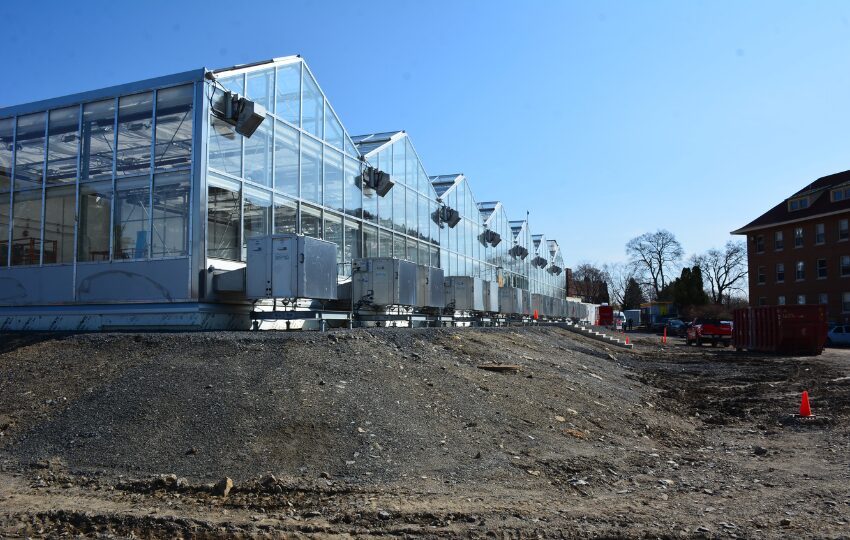
Unless you’ve been directly involved in a renovation project at McGill, you may wonder how it all works: Who oversees these projects? Who pays for them? And who decides what gets done when?
Here is an FAQ we hope you’ll find helpful:
Why are there so many construction and renovation projects at McGill, and who pays for them?
McGill’s buildings are quite old. Due to limited funding for many years, the renewal and upgrade of building components and systems fell behind. This “deferred maintenance” today is estimated at $925 million.
In recent years, McGill has spent approximately $130 million annually on construction and renovation. Most of the funding for such projects comes from the Quebec government. To help universities tackle their deferred maintenance, the government significantly increased its annual funding for construction and renovation (or “capital projects”) for a few years, hence the increase in projects seen on McGill campuses.
Some 200 projects are underway on our campuses, from relatively small classroom or lab upgrades to transformative projects such as the New Vic. Sixteen per cent of the projects are at Macdonald Campus.
Approximately one-quarter of the projects are lab renovations, often to accommodate new research equipment; these are mostly funded by the Canada Foundation for Innovation (CFI). The federal government has also provided periodic funding for larger research infrastructure projects.
Finally, some projects are supported by donations.
Read more about some of the major projects approaching completion or soon to kick off.
Who decides which projects get done when?
Capital projects are managed using a portfolio-based process. The portfolios reflect the various functional areas of the University. Units representing each of these sectors are each given an annual allocation and have the mandate to review and rank the requests for projects in their area of responsibility. For example, capital projects put forward by faculties are part of the Institutional Priorities portfolio, which is led by the Provost and Vice-Principal (Academic). This prioritization process enables the University to align capital expenditures with McGill’s strategic objectives. Read more about the different capital project portfolios and which units lead them.
Large-scale projects ($20M+ and other criteria) are first submitted to the University Capital Priorities Working Group, composed of senior administrative, academic and research representatives. Examples include the $130-million redesign and full indoor reconstruction of the Stewart Biology West block and the redevelopment a few years ago of the former bookstore into the Armstrong Building.
Finally, the funding awarded by the Quebec government does come with certain rules. All university buildings are assessed on a five-year cycle and each building is given a grade based on its condition. The portion of the provincial funding specifically targeted toward reducing our deferred maintenance must be allocated to projects in buildings that were given the worst grades in the government audit. One other rule is that provincial funding must only be used on buildings recognized by the government. This excludes residences and athletics facilities.
Who oversees construction projects at McGill?
Facilities Management and Ancillary Services (FMAS) oversees most capital projects. (A few large-scale projects, including the New Vic, have dedicated teams outside of FMAS.)
At FMAS alone, about 100 people are involved in the planning, design and management of projects, including urban planners, architects, engineers, technicians and project managers. Additionally, many maintenance/building operations and safety staff are brought in at various stages. FMAS also works with external firms, from architects and engineers to project managers and general contractors.
Why do construction projects take so long?
Each construction project is unique, with its own scope of work and logistical constraints, including those posed by the age and deteriorating condition of many of our buildings.
There are many phases to a project, and each takes a certain amount of time. The feasibility of a project request must first be assessed, then the scope must be defined and the technical requirements detailed. The design, tendering, off-site manufacturing of components and the on-site construction itself may each require many weeks or even months. In some cases, people need to be relocated, and temporary spaces must be found and fitted out.
Labour shortages, along with supply-chain disruptions and a surge in prices, have contributed to delays in many projects in the past few years. The impact of the COVID-19 pandemic (construction work suspended for a couple of months, reductions in crew sizes due sanitary restrictions) was also significant.
Finally, Facilities Management and Ancillary Services has on average 200 active projects at any given time, at different stages of completion, ranging from scope definition to delivery, including between 60 and 80 in construction simultaneously, which stretches resources thinly.
How can I find out which projects are happening in my building?
A “construction” layer on McGill’s interactive campus maps provides this information. Click on the “View themes” icon in the bottom right-hand corner to show the construction layer, pick a campus and pick a building. The projects listed include all those currently in the construction phase or where construction is scheduled to begin in the next six months. The information is updated every two months.
For questions on specific projects, you may go through your building director or write to construction.feedback@mcgill.ca
